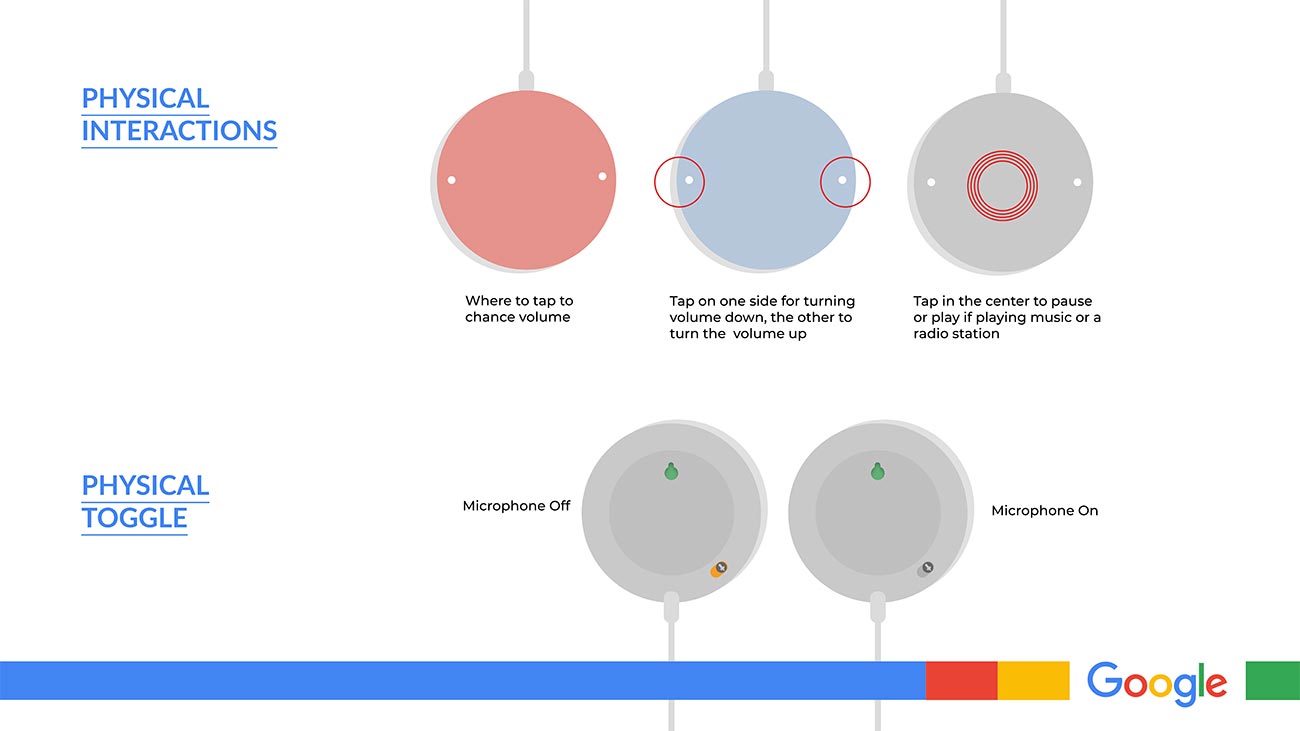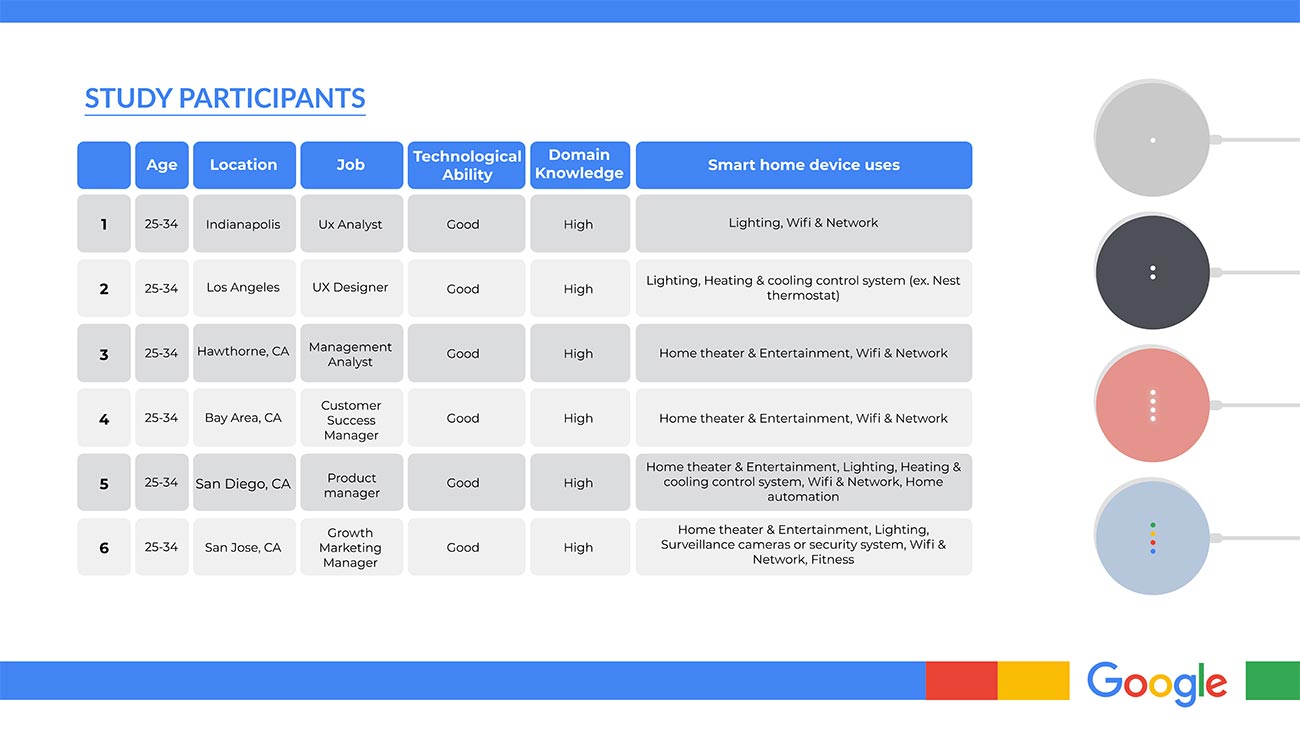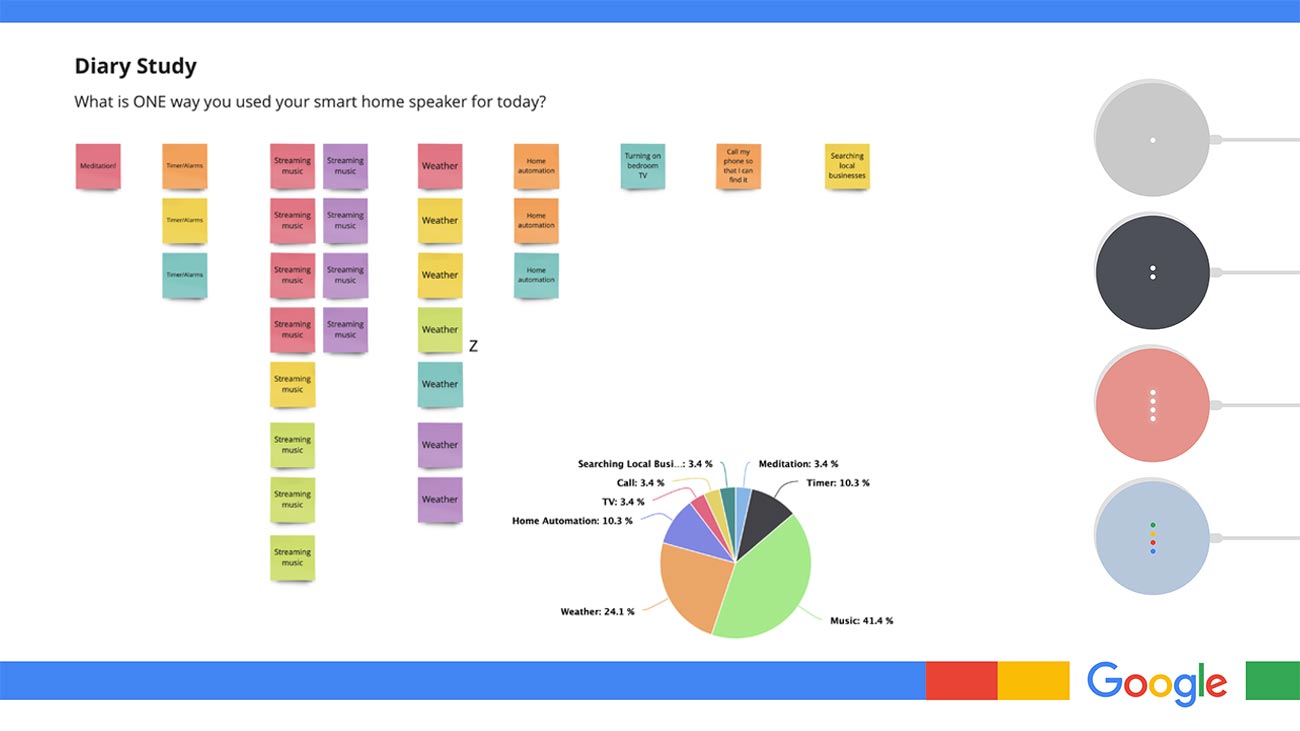Understand the interaction styles people have with their smart home speakers, what they use them for, and why they chose to use them.


We knew we wanted to study how people used smart home devices, but we didn’t know which area to focus on. When screening for participants, we asked people what kinds of smart home devices they had in their home. The majority of responders said they had a smart home speaker (Google Home/Amazon Alexa). We were interested in challenging ourselves to do a VUI project as something different, so we did.

Duration: 5 days
The cadence of entries: 1 Wednesday, 1 Thursday, 1 Friday, and 1 Saturday or Sunday (4 total entries)
Supplementary research: Post-study interview
We found that people used their smart home speakers multiple times a day, so we felt that asking them to record their day’s usage 4 times over a 5-day period starting on a Wednesday and ending on a Sunday, would allow us to see if their behavior was different depending on the day of the week and not be an overwhelming amount of effort for our participants. The daily survey asked participants to tell us the type of interaction they had with their smart speaker (asking for the weather, streaming music, whether they encountered any errors). Every day we sent them a reminder to complete their survey and we were able to collect all of the entries by the end of the study.


While errors were found to be in several categories, the common theme was a lack of understanding on the part of the assistant. The users’ common issues led to many saying while they would use it more, it was frustrating to use beyond the actions they could trust the assistant to complete successfully already.
Users were commonly frustrated by lack of understanding due to:
How might we allow users to be understood the first time so that they can efficiently complete their intended task? If they aren’t understood the first time, how can we help mitigate their frustration?
For the assistant to understand the user
As a better error handling process
Jana Thompson • Isabelle Su • Ali Hoss